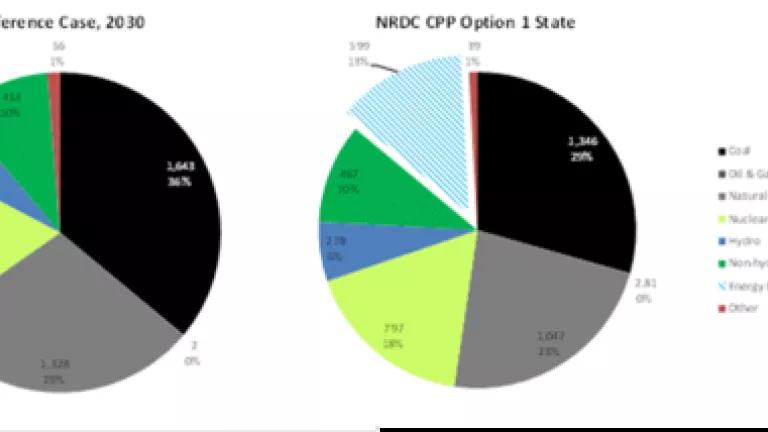
A new report out from the Department of Energy shows that we don't need a substantial investment in more natural gas pipelines in our country in order to combat climate change. That's great news any way you slice it. But some have misconstrued the report to suggest the fact we have ample pipelines means EPA's new Clean Power Plan will cause an increase in natural gas. That's not the case. To the contrary, DOE's report is a nice follow up to earlier findings from EPA that together show us the CPP should not increase natural gas use OR pipeline construction.
Here's why:
First, the DOE study examines how much pipeline growth would be needed to handle different amounts of hypothetical increases in gas use, but explicitly does not predict that power sector gas use will increase under the Clean Power Plan. Instead, it shows that the nation's existing pipeline capacity is substantial. So even if we were to see an increase in gas--for any reason, including other policies and market developments--pipeline infrastructure additions and associated costs would be modest compared with the rates at which the industry has expanded natural gas transportation routes in the past fifteen years.
Second, NRDC has repeatedly demonstrated that reducing carbon pollution from the electric power sector does not have to mean a big switch from coal-fired generation to natural gas (see examples here, here and here). To the contrary, we can dramatically reduce carbon pollution from the highest-polluting sector with deployment of renewable energy and energy efficiency, which are both cleaner and more cost-effective strategies for reducing carbon pollution. In fact, under EPA's own initial CPP proposal--which we believe uses conservative assumptions about what efficiency and renewables can do--gas use in the power sector would be 5% LESS in 2030 with the rule than without it.
NRDC's own analysis shows that cost-effective clean energy technologies and energy services can lead to a significant decline in power sector natural gas generation. NRDC has shown that in a scenario with the proposed Clean Power Plan state targets, natural gas generation declines by 21% below the Reference Case (the business-as-usual) in 2030. NRDC also finds that the share of the fuel mix occupied by natural gas would shrink from 29% to 23%, and that the market share of clean energy generation would be 23%, equal to natural gas. The figure below illustrates generation mixes in 2030 in the scenarios NRDC evaluated.
Source: ICF Analysis for NRDC, based on publicly available assumptions.
The bottom line is--our nation doesn't need to increase natural gas use and ramp up investment in pipelines to fight climate change. Increased investment in fossil fuels and supporting infrastructure, even at a modest rate like DOE suggests, is neither a necessary nor cost-effective strategy for reducing carbon pollution. Smarter, cleaner and cheaper solutions are readily available, and becoming more competitive than ever before (NY Times). By prioritizing energy efficiency and renewable energy generation in compliance plans, states and power companies can avoid exposure to volatile fuel markets, protect public health, air and water, and achieve Clean Power Plan targets with the cleanest and most cost-effective resources.
